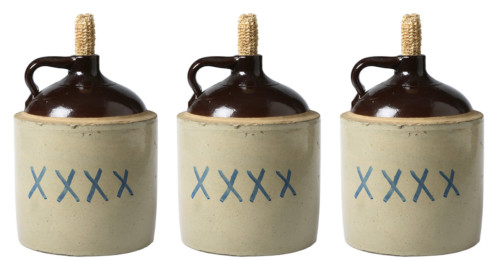In an industry with plenty of confusing terminology, the nice thing about “proof” is that its liquor-related use is basically the same as its common use. When a friend tells you “I can juggle three sleeping Toucan parrots without waking them up,” you ask for proof. When an old time distiller is trying to sell you some corn whiskey he made in the mountains of West Virginia and says it’s “right mighty strong,” you definitely want proof.
According to legend, the concept of “proof” comes from soldiers in the British Royal Navy, who (back in the 18th century) had to douse their gunpowder in rum as a test of its potency. If the wet gunpowder still ignited, it was “proof” the alcohol content was high enough, 57% ABV. If it didn’t ignite, well, you probably had some angry—and armed—British soldiers on your hands. (Another legend has it that rum needed to be at proof so that if a barrel broke on the ship, it wouldn’t render all that precious gunpowder useless.)
Proof standards vary—in the U.K., the scale is different than it is in the U.S., so never buy a bottle of liquor in England assuming you know what you’re getting into. But in the U.S., a baseline was settled on in the mid 19th century, making a 50% alcohol by volume spirit exactly “100 proof.” Thus the doubling was born. And while most of us probably got it backwards once or twice—bragging to our friends that our dad had a 160% ABV whiskey in his liquor cabinet—by now it’s simple enough to tell. (The Alcohol and Tobacco Tax and Trade Bureau also has certain federal labeling requirements, meaning you’ll always see alcohol percentage, though “proof” isn’t always required.)
Beyond looking at the proof itself, which will—thank goodness—tell you exactly how much alcohol is in the bottle, there are a couple other terms to look out for when purchasing a hard liquor:
- Cask Strength: This one’s pretty easy to remember, since it just means the spirit is bottled at the strength it was in the cask—with no added water, and so always higher than the average 40 to 50% ABV. Generally used for Scotch or bourbon whiskey, “cask strength” has recently been used for DeLeon’s 108 Proof Extra Añejo Tequila.
- Barrel Proof/Barrel Strength: The same as cask strength, meaning the proof is the same as it was in the barrel.
- Navy Strength: Can refer to gin or rum, and always indicates a stronger spirit, traditionally clocking in at 57% ABV (though it can go higher, even close to 70%)
- Overproof: Interchangeable with Navy Strength, indicating a gin or rum over 57% ABV.
- Single Cask: This one isn’t about strength, but just so it doesn’t confuse you, it means the spirit wasn’t blended from multiple casks; it’s just the product of one cask-aged spirit. Not to be confused with Single Malt.
- Double Barrel/Double Wood: Like Single Cask, this isn’t about strength, but the number of times a spirit was aged in wood barrels; it’s not required in labelling, but a producer might put on to suggest something about the spirit’s flavor profile or complexity.
